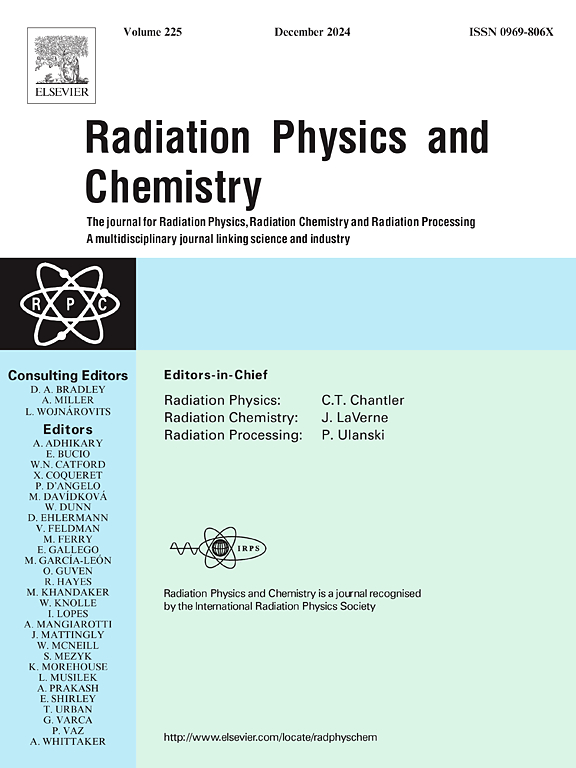物体定位和康普顿散射对高能 X 射线货物扫描中材料判别的影响
IF 2.8
3区 物理与天体物理
Q3 CHEMISTRY, PHYSICAL
引用次数: 0
摘要
多能量 X 射线检测系统面临的一个主要挑战是物体定位对材料辨别精度的影响。本研究通过对放置在不同位置的各种材料进行实验来解决这一问题。在标准双能量货物检测系统中,以不同高度和角度对四个楔形样品进行了测试。结果表明,物体的位置会显著影响到达探测器的辐射分布,这主要是由于康普顿散射 X 射线量的变化造成的。这些变化会明显影响材料分辨曲线。此外,将物体放置在离加速器更远的地方,可将某些探测器的材料辨别精度提高 4%-14%,并将检测精度提高 4%-14%。研究结果强调了精确控制实验条件以获得最佳材料辨别结果的必要性。从这项研究中获得的启示有助于优化多能 X 射线检测系统、提高材料辨别能力和威胁检测精度。本文章由计算机程序翻译,如有差异,请以英文原文为准。
Impact of object positioning and Compton scattering on material discrimination in high-energy X-ray cargo scans
A key challenge in multi-energy X-ray inspection systems is the effect of object positioning on material discrimination accuracy. This study addresses the issue by conducting experiments with various materials placed at different positions. Four wedge-shaped samples were tested at different heights and angles within a standard dual-energy cargo inspection system. The results demonstrated that object positioning significantly influences the distribution of radiation reaching the detectors, mainly due to variations in the amount of Compton-scattered X-rays. These changes notably affect material discrimination curves. Additionally, placing objects farther from the accelerator enhanced material discrimination accuracy by 4-14% and improved detection precision by 4%–14% for some detectors. The findings highlight the need for precise control over experimental conditions to achieve optimal material discrimination results. The insights gained from this study can contribute to optimizing multi-energy X-ray inspection systems, improving material discrimination capabilities, and enhancing precision in threat detection.
求助全文
通过发布文献求助,成功后即可免费获取论文全文。
去求助
来源期刊

Radiation Physics and Chemistry
化学-核科学技术
CiteScore
5.60
自引率
17.20%
发文量
574
审稿时长
12 weeks
期刊介绍:
Radiation Physics and Chemistry is a multidisciplinary journal that provides a medium for publication of substantial and original papers, reviews, and short communications which focus on research and developments involving ionizing radiation in radiation physics, radiation chemistry and radiation processing.
The journal aims to publish papers with significance to an international audience, containing substantial novelty and scientific impact. The Editors reserve the rights to reject, with or without external review, papers that do not meet these criteria. This could include papers that are very similar to previous publications, only with changed target substrates, employed materials, analyzed sites and experimental methods, report results without presenting new insights and/or hypothesis testing, or do not focus on the radiation effects.
 求助内容:
求助内容: 应助结果提醒方式:
应助结果提醒方式:


